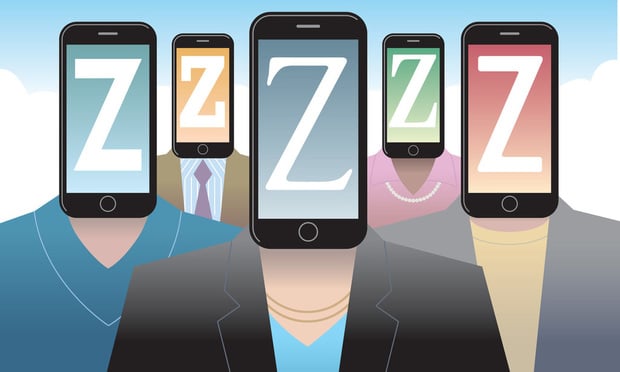Times are changing, members are aging. Numerous industry sources discussing the future of credit unions have all stressed the importance of acquiring young members. But how do you get their attention? More importantly, how do you make a credit union a vital part of their life? An extreme paradigm shift has to take place. Credit unions are faced with not only attracting, but more importantly, retaining a generation of members that understands very little about how money works and or how credit unions can serve their financial needs. The initial step to reaching young adults is to understand how significant we are. Teenagers and young adults influence $324 billion annually (Jupiter Communications) and are out there racking up the bills on everything from downloadable cell phone rings to tricked out cars and designer clothing. Further, young adults stand to inherit an estimated $17.8 trillion dollars (American Demographics, 2003). A significant portion of that inheritance will come from the aging credit union members. If we, the grandchildren, nieces and nephews of those members, do not belong to your credit union the dollars are gone and mostly likely will not return. As a 20-year old college student and head of my own company, here are some thoughts on how to reshape marketing approaches to connect with me and my cohorts. To capture and hold our attention it is necessary to change some misconceptions about young adults that seem to befuddle many credit unions. Misconceptions: Young adults aren't interested in money. Wrong. This is the millionaire generation. We grew up in the dot com era. Whether it's the hit TV show Joe Millionaire, "Pepsi's Billion Dollar Giveaway" or 50 Cents' hit hip-hop album "Get Rich, or Die Tryin," we are surrounded by a constant buzz about money. Believe it or not, young adults want to learn and are attracted to success stories about other young adults. Give us a good article about how investing in a house can have my roommates paying me rent and you'll have our undivided attention. Tie those stories to how your credit union made a difference through services they provided and now you are talking. We are a very diverse group so make sure to offer a broad range of products and services that meet our varying needs. Young adults aren't profitable. Wrong again. Skateboards get traded in for cars. Not only will capturing young adults show long-term dividends, we can be a profitable segment now. We are using credit cards (often several), buying new cars, leveraging our education against student loans and will soon be or are already looking to purchase our first home. Provide services to meet our needs and we could stay around a long, long time. It costs a credit union seven times more to obtain a new member than it does to retain an existing one. Young adults don't care enough to be involved. This generation is one of the most caring in history. Not only do we give of our money, we give of our time. We are one of the most connected groups ever. With the changes in communication technology, we are constantly connected, whether using the Internet, cell phones, text messaging or on Instant Messaging (IM). We are destined to be the most prolific user groups of online banking services in the future. However, when a young adult is "online" we are very likely talking with five friends on IM, listening to MP3s, surfing deal sites and searching for information to help with homework. We will not wade five or six pages deep into sites that do not show a clear relevance to us. Do you really think that balloons, free pens and statement stuffers hold our attention? We care tremendously but not about cheap trinkets and gimmicks. Start building long-term relationships with real interactive hands-on events and awareness programs. Make things face-to-face and involve us in the marketing process. Young adults aren't brand loyal. Just because young adults are very willing to try new things, does not mean that we do not stick with things that are important to us. Research on credit card use shows that people typically keep their first credit card for 8 to 12 years. Recognize and respect us for the decision makers we are. Make us an integral part of your marketing plan, and there is a strong probability that we will have an interest. Use a key strength of the credit union, "personal individual recognition," to your advantage. Get to know your young adults. Your marketing plan should be collaborative and reflect what is important in our lives. Make sure that whatever you do, don't try to be "Hip." RollingStone put it this way, "There is nothing worse than an aging hipster." Be honest, use humor, and involve us in the process. We are extremely market savvy and will see right through insincere marketing. Some other "Do's" and "Don'ts?" DO – Focus on member retention. Worry less about the short-term and more about offering multiple service opportunities to deepen relationships. Create that life long member who will do thousands of dollars in business over their lifetime. DON'T – Talk down. This is the fastest way to turn off a young adult. We're incredibly smart and know when we're being targeted. We do, however, respect a clever marketing campaign. DO – Involve young adults on your board and in your marketing. On average 8-10% of credit union membership is young adults. We should have direct representation in the governance of our credit union. Another way to involve us is to use peer-to-peer marketing. This is extremely effective for this market segment. Citicorp is a great example and uses young adults to attract young adults. They are all over college campuses, advertise on AOL Instant Messenger and run ad inserts in major young adult publications. DON"T – Refer to young adults as kids or try to connect us through "kid" marketing programs. DO – Go after roommates. On the same line as peer-to-peer marketing, most young adults are living with other young adults. Give incentives to your existing members to sign up their friends and roommates. Young adults listen to each other. Make branch offices a place where we like to go, more young adult friendly. Where do many young adults hang out? Starbucks! The big trend with banks is to make their branches more "user friendly." Umpqua Bank is testing several newly remodeled facilities that include lounge areas, free wireless Internet service and coffee. Wells Fargo is testing branches with Starbucks and Starbucks just announced its own personal credit card. Market through education. Develop specific young adult packages. Young adults use all the same products and services as any other customer. Offer quality services that are relevant and you will more than pay for your marketing efforts by retaining your young adult members. Connecting now to your young adult members will establish that life long relationship and a strong return on your investment.
Continue Reading for Free
Register and gain access to:
- Breaking credit union news and analysis, on-site and via our newsletters and custom alerts.
- Weekly Shared Accounts podcast featuring exclusive interviews with industry leaders.
- Educational webcasts, white papers, and ebooks from industry thought leaders.
- Critical coverage of the commercial real estate and financial advisory markets on our other ALM sites, GlobeSt.com and ThinkAdvisor.com.
Already have an account? Sign In Now
© 2024 ALM Global, LLC, All Rights Reserved. Request academic re-use from www.copyright.com. All other uses, submit a request to [email protected]. For more information visit Asset & Logo Licensing.









